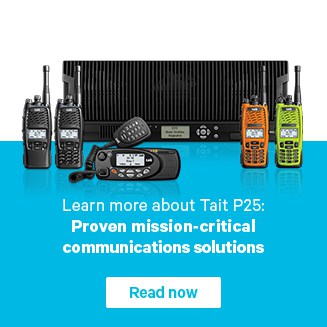Introduction to P25
P25 Standard
P25 Services and Features
Call Types
Some of the basic features P25 provide are:
- voice calls to groups,
- unit-to-unit or individual calling,
- emergency calls where a higher priority or emergency call can either preempt a channel on a trunked system or be alerted to the dispatch personnel so that they are aware that somebody is in danger and needs immediate help,
- talking party identification, allowing the person talking on the channel to be identified via an ID number or user alias.
Other Features
There are other features, such as radio check, where you can confirm whether a radio was switched on and in coverage. Inhibit and uninhibit means you can disable a lost or stolen radio so it no longer functions. This is very important when using encrypted radios. If an encrypted radio is lost there is no guarantee the channel is secure. However, if the radio has been inhibited, even if the radio is found no one can listen to the communications on the encrypted channels.
Call alert behaves very much like paging. You can also send messages or status updates from dispatch to a radio, or from one radio to another. A number of these features have been available on public safety radio networks for many years. P25 allows a replacement of those features without having to change basic operating practices.
It is important to remember that these features can also be disabled or turned off in the radio. So if these features are not already in use on your system, you do not need to enable them and add confusion or complexity to the radio operation unless you want to.
New Features with P25
P25 offers many new features to meet the evolving and changing needs of public safety agencies, such as the ability to carry IP data for advanced data applications, and support for GPS and location services, enhancing user safety by being able to immediately locate them in an emergency situation.
Another benefit of P25 is that it can be designed and deployed in a number of different configurations. To meet the end user needs, P25 supports simplex radio to radio operation, repeaters for expanded coverage, wide area voted or Simulcast systems, trunked operations, and can interface to a wide range of dispatcher solutions, voice recorders, and other third party applications, such as location services.
More detail about these different system types is described in the Basic Radio Awareness communications systems module.
 Radio Academy
Radio Academy





